We're at the venue, a month and a half before the wedding. Lord Nelson and the planner there are discussing table decorations for the reception. I'm thinking about battleships. The talk turns to centerpieces, and the lady says something about using water and floating things in it, like candles. My brain immediately says "You know what else floats? Ships! And if we can get some models that we could float, it would be a cool touch, and one that I'd like." I share this plan, and both of them like it, too. Lord Nelson points out that since the centerpieces they're talking about have three vase/cylinder things, she can find a bunch of Kyogre models1 and float those, too. We'll fill the last one with fake flowers or something. Everyone likes this plan.2
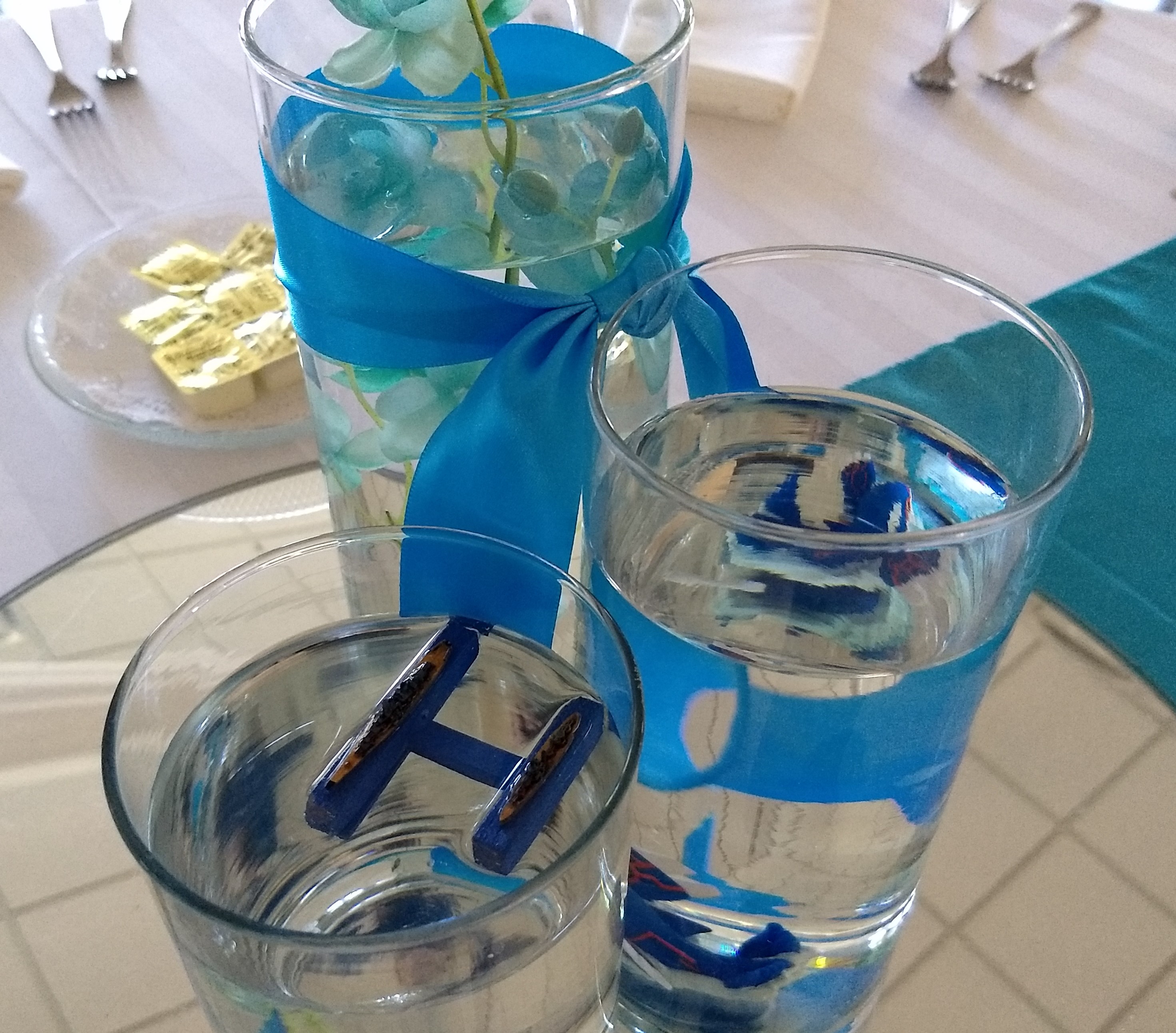
The final result
I immediately busy myself trying to find models. Given that I have to fit the models into a cylinder which is 3-4" across, they're going to have to be small. I'm having trouble finding anything until I stumble across 1:6000 wargaming minis from Figurehead. I can just build a raft out of balsa or something for them to float on. But because they're not designed to float, I know stability is going to be a problem. They're metal, which means really excessive topweight. Hmm... What if I make the raft a catamaran? That solves the stability problem handily. Catamarans basically don't tip over, and I can then use twice as many ships. It'll probably look better too. So I order a bunch. Two sets of Iowas, one WWII and one 80s, a pair of Nelsons for her, some Wasps, to represent America, and Iron Dukes, Burkes and Essexs to round the set out. Then I start development of the rafts. And things begin to go downhill.
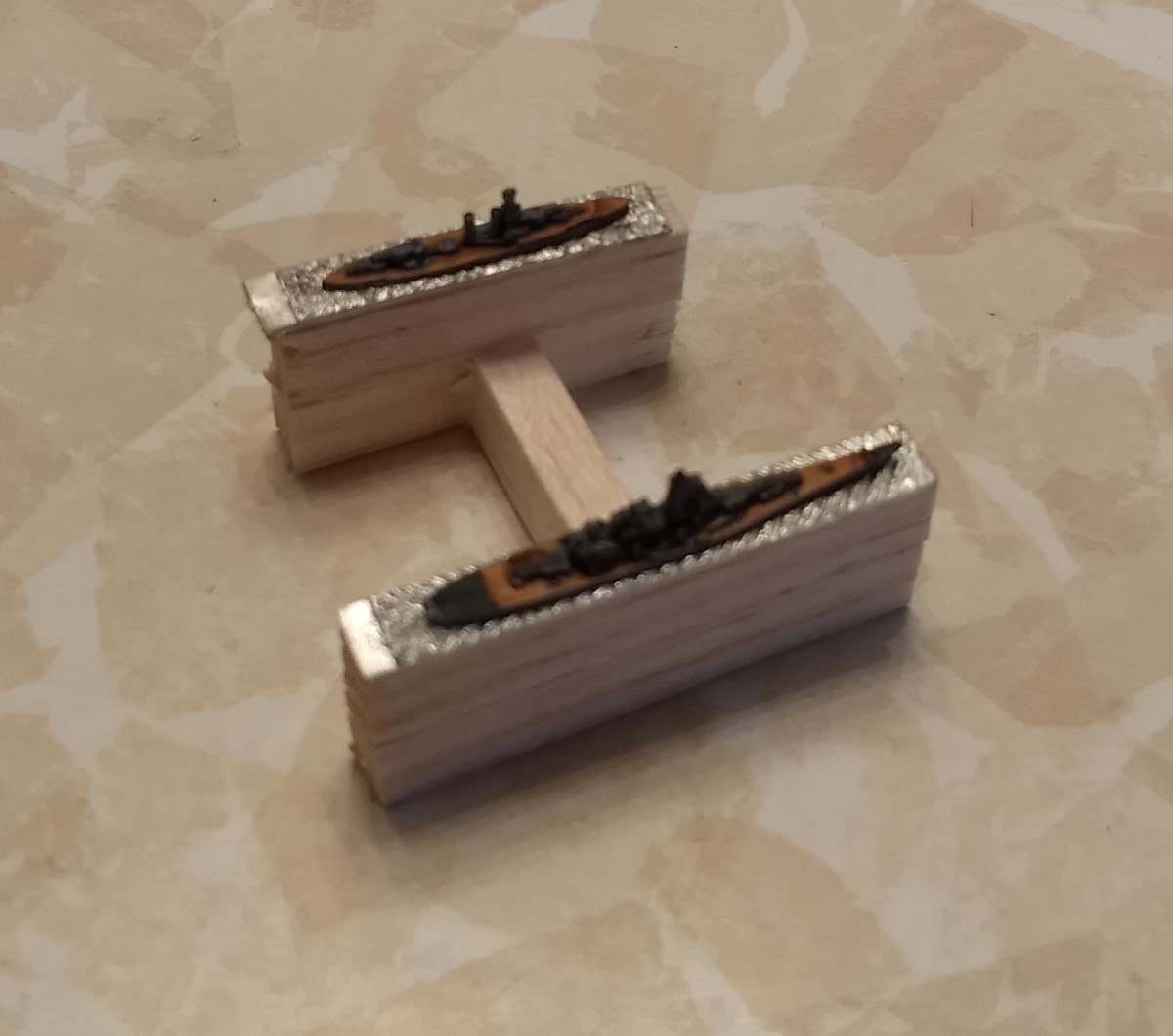
The first raft prototype
Each mini comes with a base, and I start out floating the mini and the base together. This takes a lot of buoyancy. I do the prototype work with the Iowa/Iron Duke combination, and it turns out that I need two sections of balsa the length of the ship, each a quarter by three eights, to float them, with another crossbeam of the same material. So I make up a prototype raft and try it out in the sink.
And there's an immediate problem. Yes, there's enough buoyancy. Just. But the stability isn't there. Oh, transverse stability is fine. They aren't in any danger of capsizing. But the longitudinal stability is lacking. I have a really hard time getting it to float without the ships sliding off one end or the other, and don't want to have to deal with this for all 10 rafts I'll need. I try ballasting it with small nails, but this is a lot of work and only marginally helpful, and has the downside of making the raft hard to handle. So it's back to the drawing board.
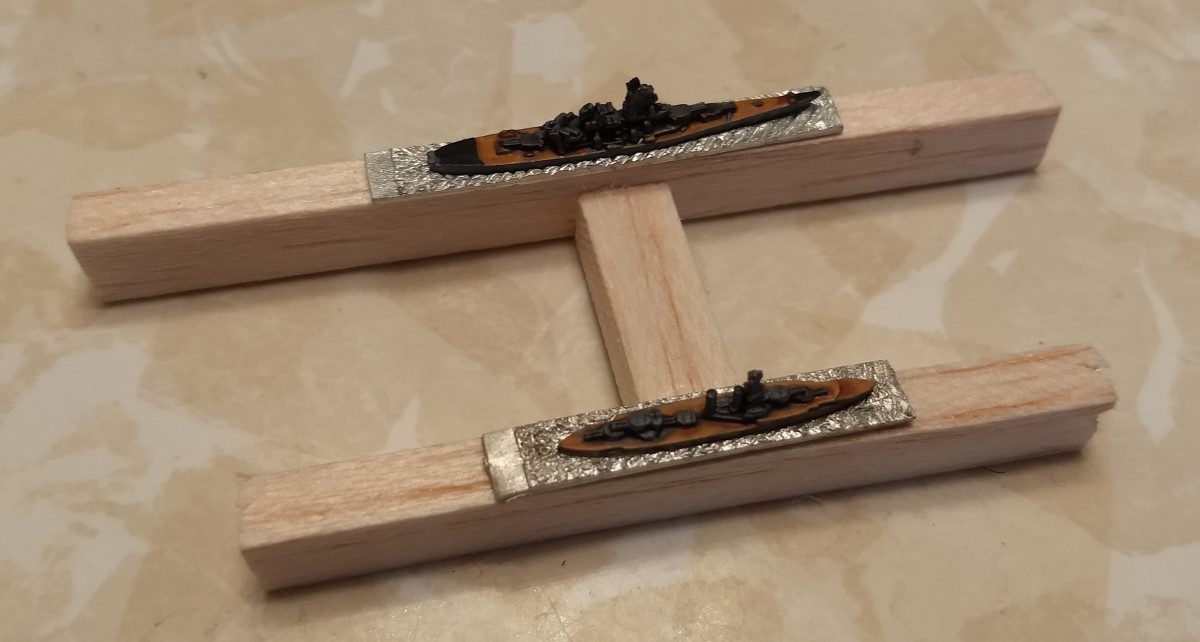
The second raft
I think this over for a little while, and realize that I haven't been thinking about the hydrodynamics of this. The center of gravity is too high, and to make the ship stable, I need to make sure the center of buoyancy moves more than it currently does. That's going to mean making the raft longer. If I replace the current double-stack with a single one twice as long, it should solve the problem. And it does, but it looks awkward, and I'm not sure it will fit into the vases. Experimenting with different lengths is going to take a while, so I put it on hold.
A friend who's a modeler agrees to help me paint these, as my modeling career to date has been a single, much larger, model last year. While talking over what to paint, I decide to abandon the bases. This should cut the amount of buoyancy I need, and may help the stability problem. After I get them home and they dry out, I try the Iowa/Iron Duke combination on the short raft, and discover that it's stable. This is slightly odd. The figure has a higher CG than the base. But I'm not going to look a gift horse in the mouth. I make up another raft for my standard test combo, this time single-height, and it works OK, although it could use some extra length for stability. Oh, and the carrier models will need double-height bases. Weight and volume may not be the same thing in warship construction, but they are the same thing in models. I work this all out and start cutting balsa.
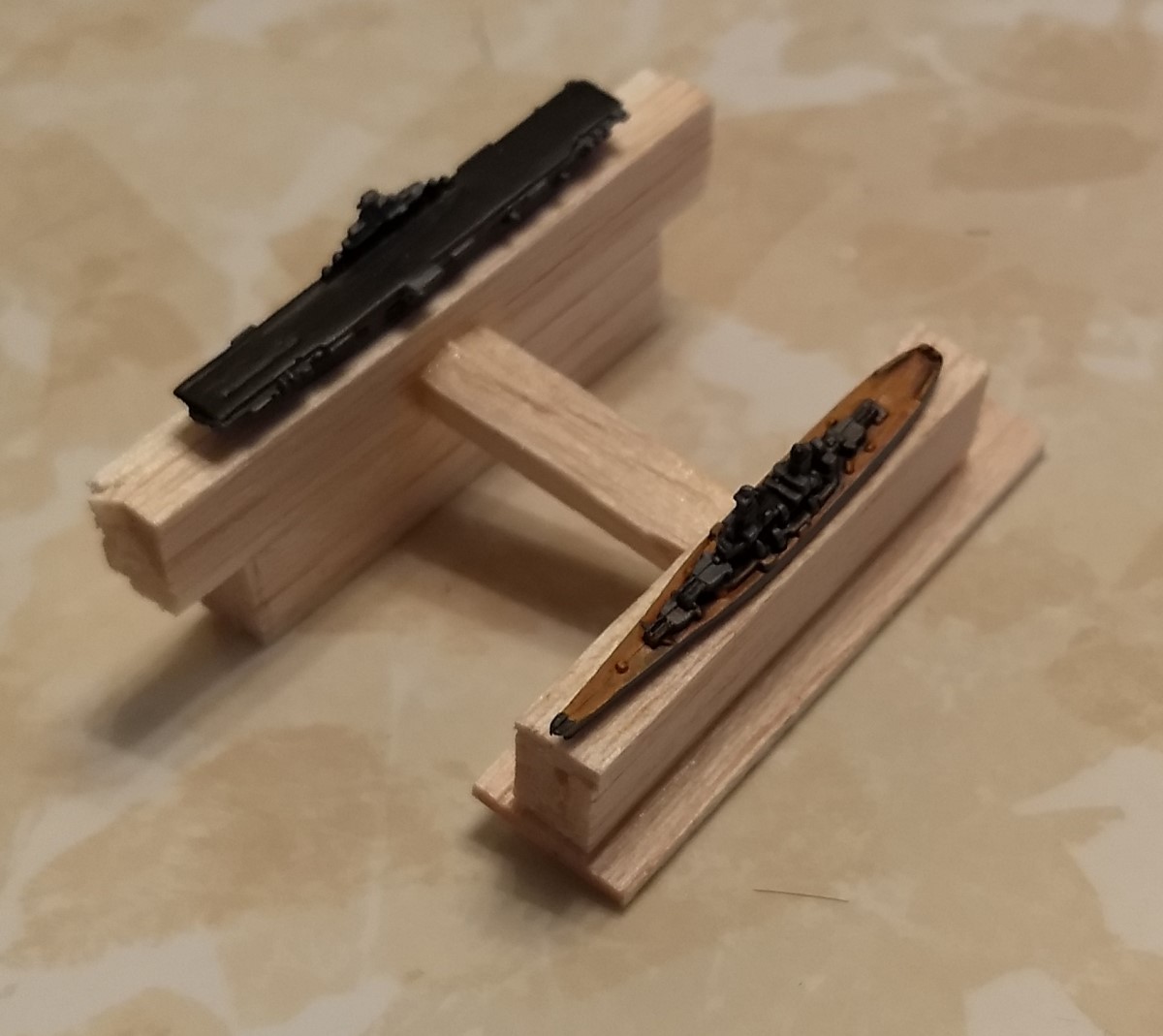
An Iowa/Essex combination, showing the extra plate on the bottom of the Iowa side
Unfortunately, I've made a mistake. The test raft used a full-size crossbar, while I've split the crossbar in half for the production versions. I'm really marginal on buoyancy in a lot of cases, and stability seems to be going away as well. In an attempt to fix the problem, I slip a piece that I cut for trials under one of the Iowas, and it works. Suddenly, it has enough buoyancy, and it's nice and stable. I think about this for a while, and realize I must have been dealing with the longitudinal equivalent of deck-edge immersion. Previously, one end sinking down didn't really shift the center of buoyancy in that direction like it should have because water was already coming over the end. Now, this isn't a problem, and the whole thing is nice and stable.
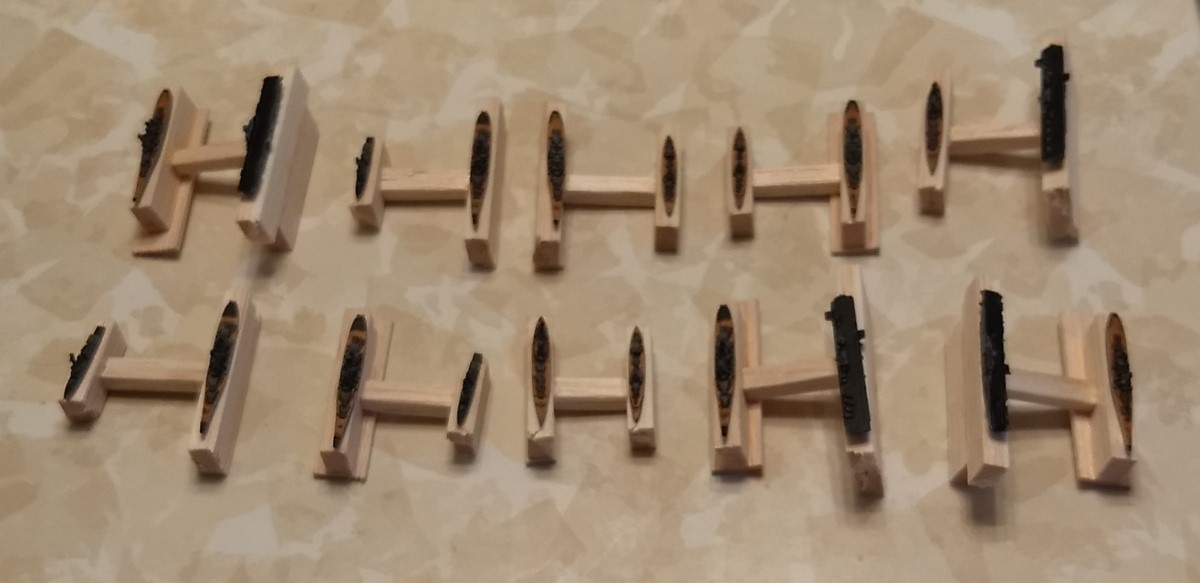
The final set of rafts before painting
I've already cut most of the parts, but I make another pass with the glue and everything starts to float pretty well. I'm still slightly baffled in a few cases. Some rafts are stable despite being very low in the water, while others need a lot more reserve buoyancy to float. I guess it's just down to the different shapes and weight distributions in the models I'm using. But once everything is set up, I take the rafts outside and spray-paint them blue.
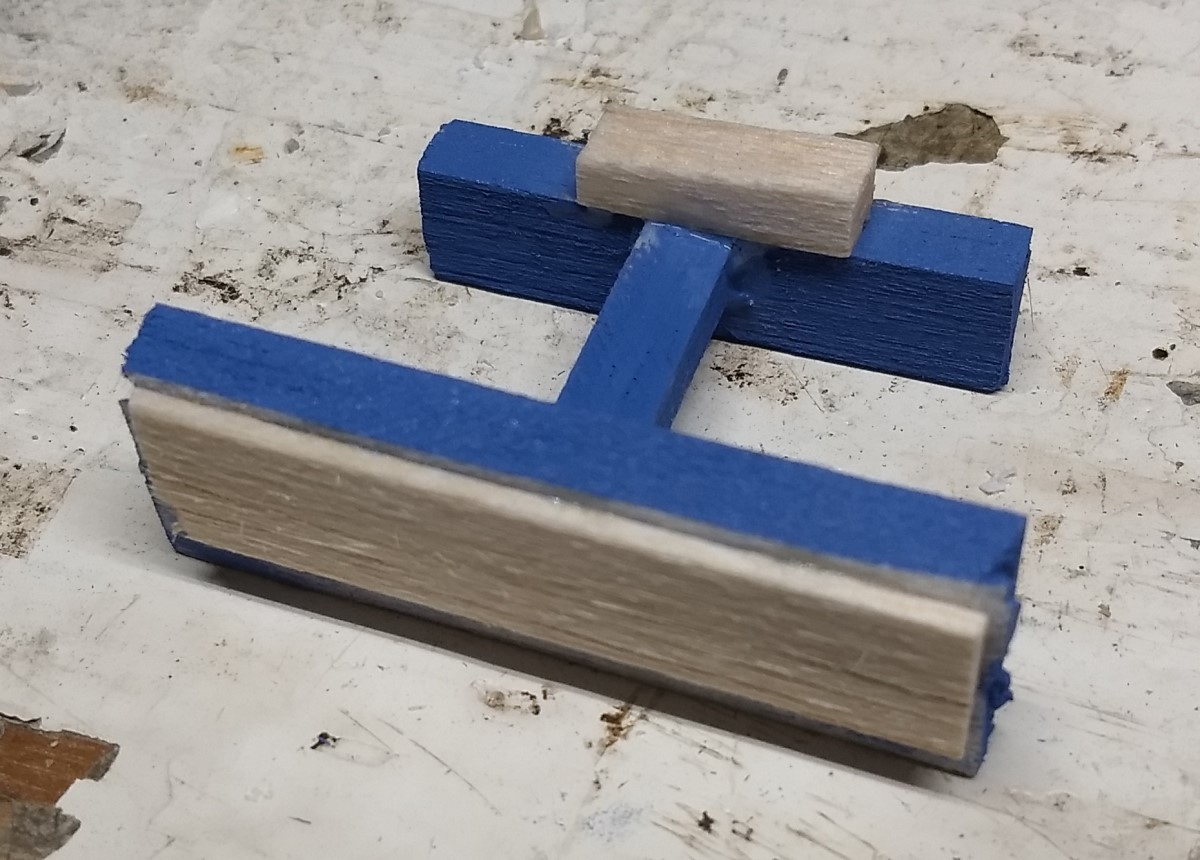
The Nelson/America raft had to be seriously rebuilt
One issue I run into but haven't investigated seriously is surface tension. This is not something normally encountered in naval architecture, so I'm not thinking about it. When a raft was put into the water, the waterline will slowly creep up. Usually, it started off below the crossbar, and I have to be sure that it was all the way up before I actually checked buoyancy. Unfortunately, I don't hit on the idea of using soapy water to break the surface tension until after painting, and I discover that the America models are too heavy for the rafts I'd built, so I have to go in and add more balsa, then repaint.
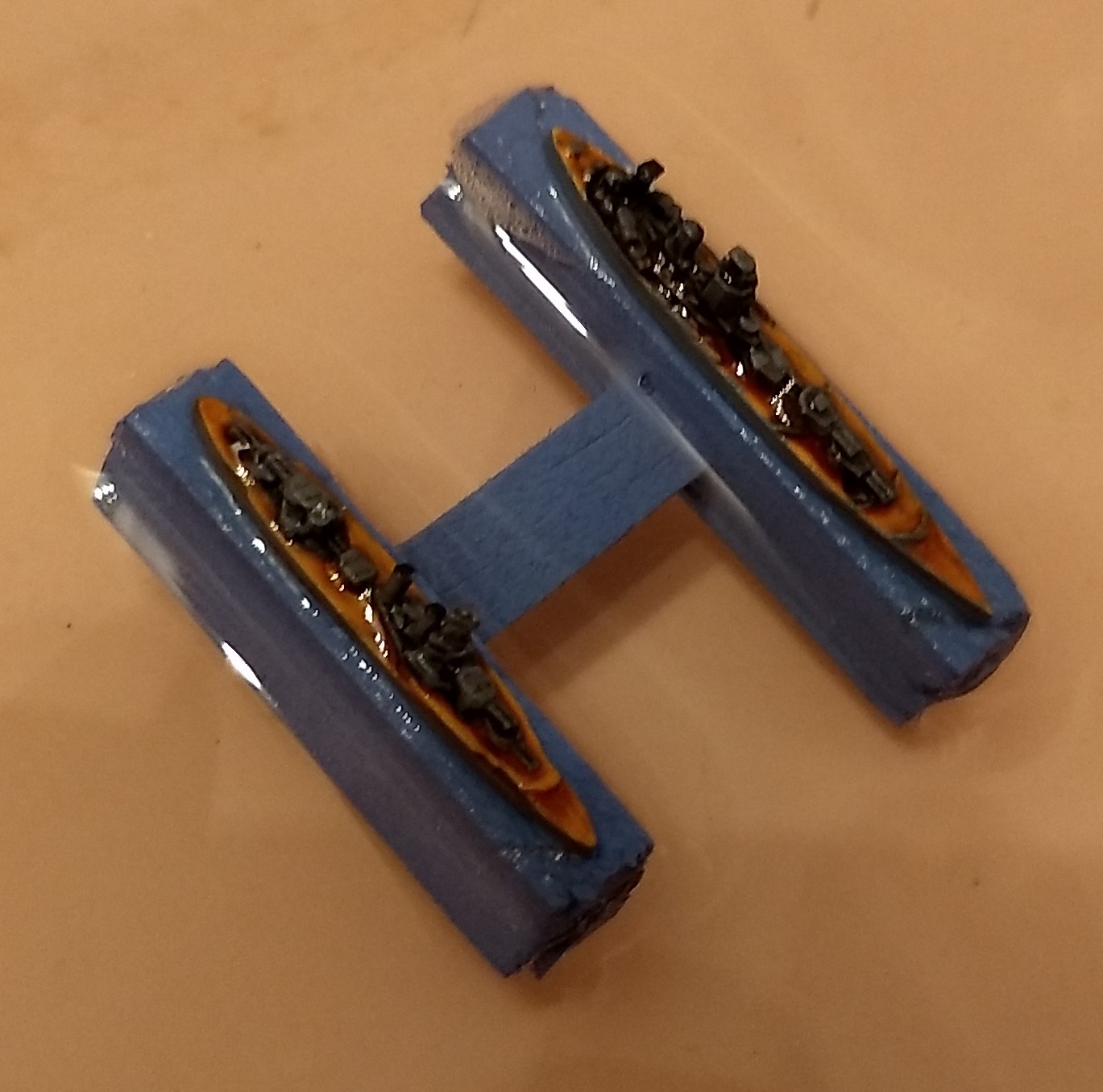
My first finished raft, Nelson/Iron Duke
Once the rafts are finished, I float them with the final models to make sure they balance, and mark the positions. I let them dry, then use a drop of superglue to secure each one to the raft. There's a final test float, and then I pack them up. I made 10 rafts, and the venue is under strict instructions to use all 10, because they were a lot of work.
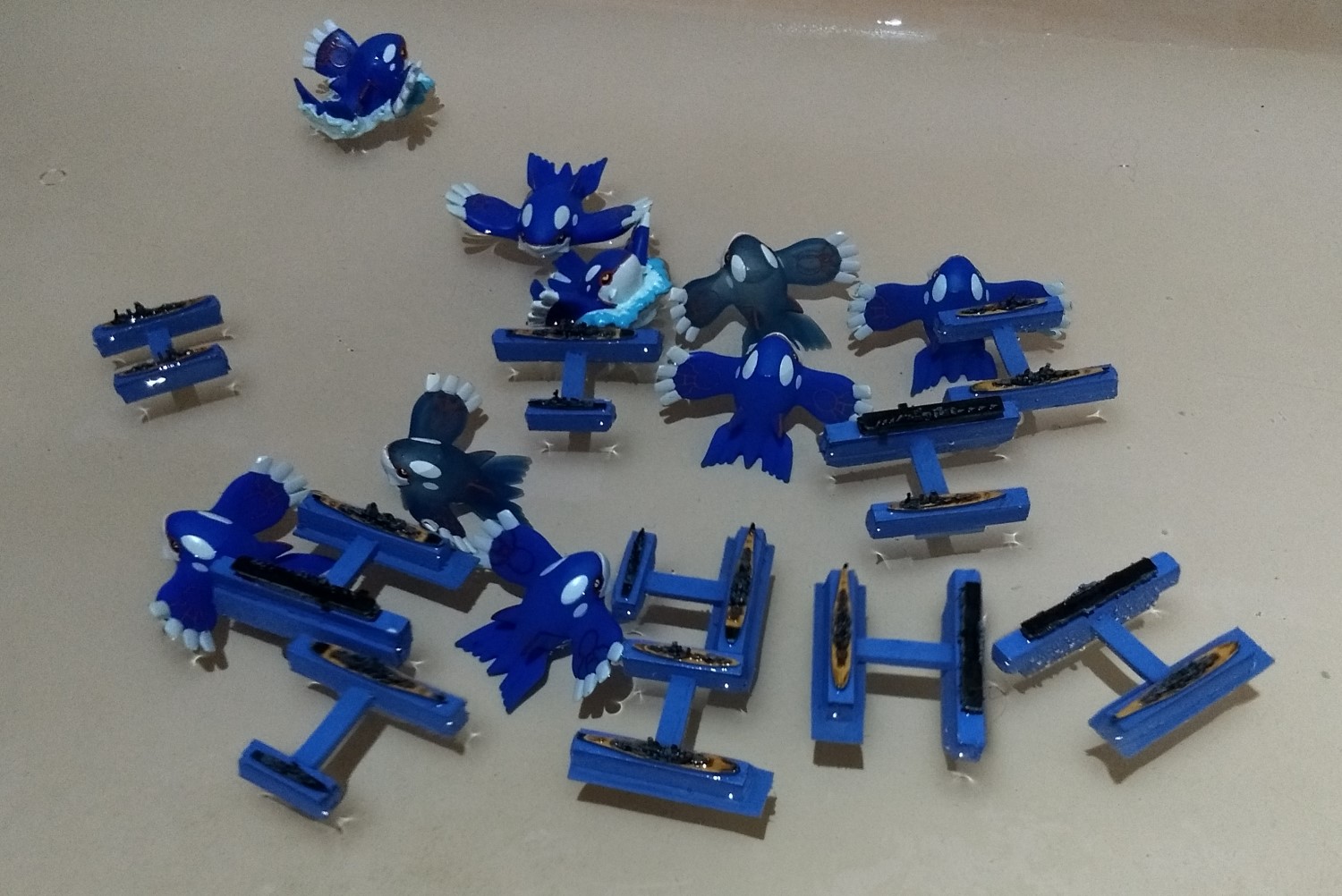
The full wedding armada after it's been done
The decorations go over very well during the wedding itself. They look great, and a lot of people comment on them. The only problem is that two of the rafts end up shattered, with each of them missing a ship. I lose an Iron Duke and an Iowa. The other ship in each pair is recovered along with the fragments of the wood from the jar it was in. I'm still not sure what happened, and I'm kind of sad. Overall, though, it was a cool and fun thing to do for the reception.
1 Kyogre is one of Lord Nelson's favorite Pokemon. Her love of Pokemon rivals mine for naval warfare. No, I am not kidding. ⇑
2 Just to be clear, I'm not rattling on about the wedding because I'm changing the theme of the blog or anything. I learned a fair bit about practical naval architecture in the course of doing this, and thought it was worth a post. ⇑

Comments
Congratulations again, and your wife has good taste in interwar superdreadnoughts.
Maybe as an April Fools post next year, you can do an article gaming out how the Grand Fleet of 1918 would fare against Kyogre.
Interesting little project, and the end result looked very nice, I think.
We did something somewhat similar at our wedding; the cake toppers were an Imperial Guard commissar and an Adepta Sororitas sister of battle.
Bean, how did you guys meet?
Nice. That might actually be dorkier that my wedding centrepieces. (We used a pile of books as the centrepieces, with a few flowers on top, but they were also guest favours - every guest had a book picked out for them, with a personalized bookmark, and at the end of the night they took the centrepieces home)
Very cool.
I'm kind of a little disappointed that I have no idea at all what was decorating the tables at my wedding.